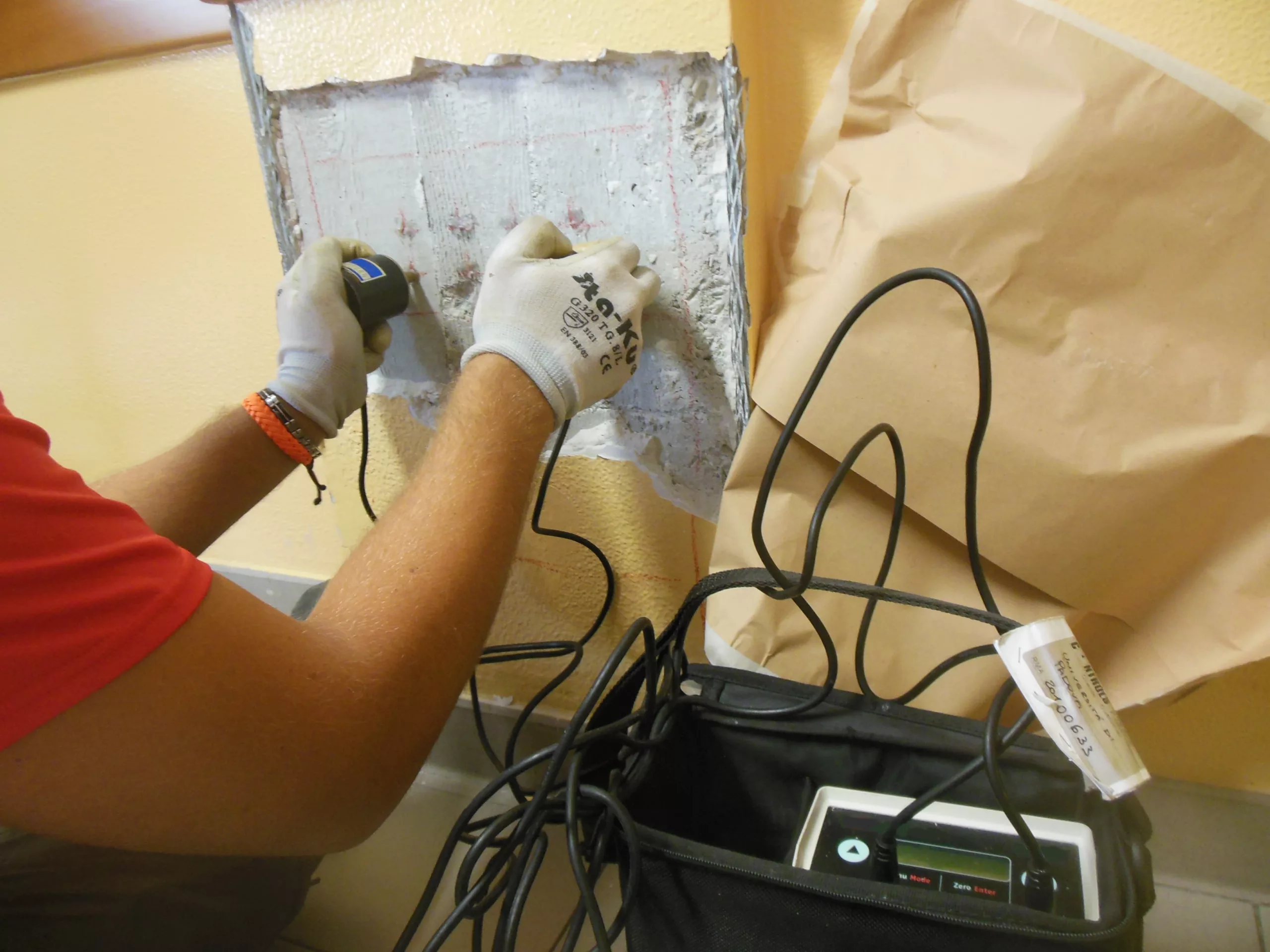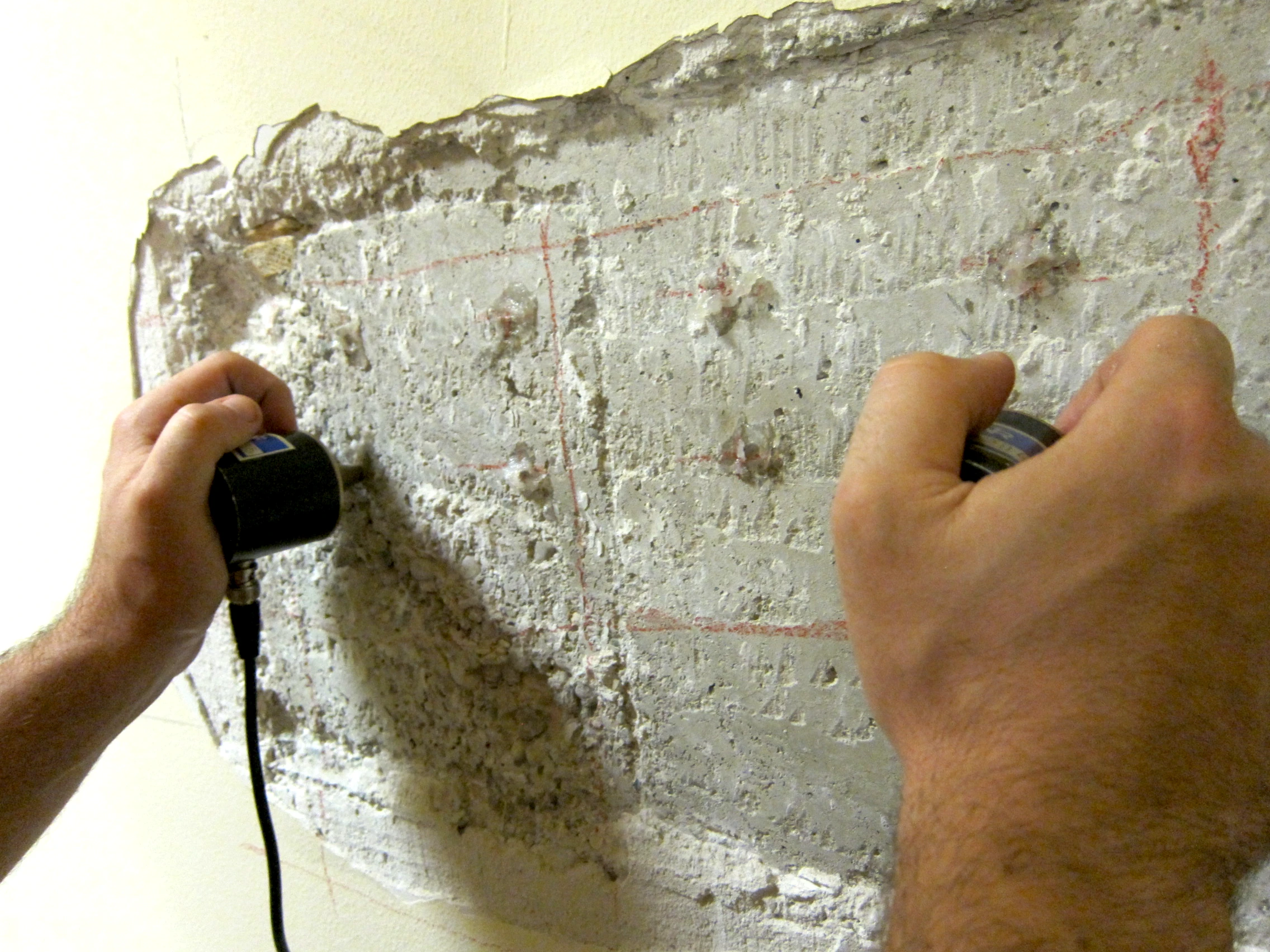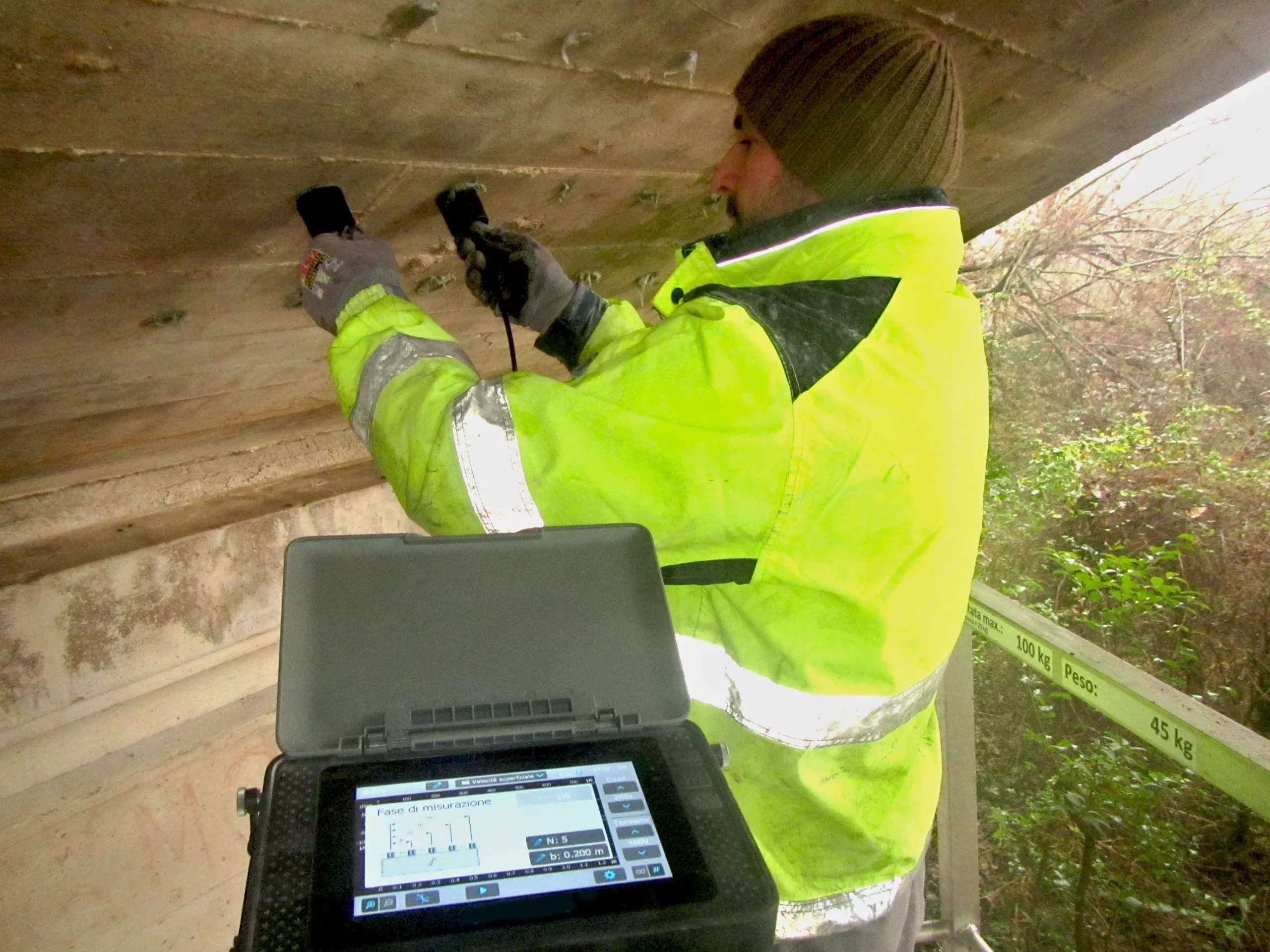


Ultrasonic test
Ultrasonic test estimates the strength of hardened concrete elements by determining the velocity of propagation of ultrasonic waves. The velocity, obtained by measuring the time of flight of the mechanical ultrasonic pulses in the concrete between one or more pairs of test points, is closely correlated to the elastic modulus of concrete, which in turn is correlated to the compressive strength.
The ultrasonic test can also provide information on the homogeneity of the concrete tested in different areas or elements. The equipment includes a pulse generator, a pair of transducers, an amplifier and an electronic timing device to measure the time interval between the start of the pulse generated by the transmitter and its arrival at the receiver.
Pulse velocity measurements can be performed by placing two transducers on opposite faces (direct transmission), or on adjacent faces (semi-direct transmission), or on the same face (indirect transmission) of a concrete structure. Test points are selected using a covermeter, which detects the presence of rebar, to avoid performing the test in proximity of superficial rebar.
Reference standards: UNI EN 12504-4:2021.
